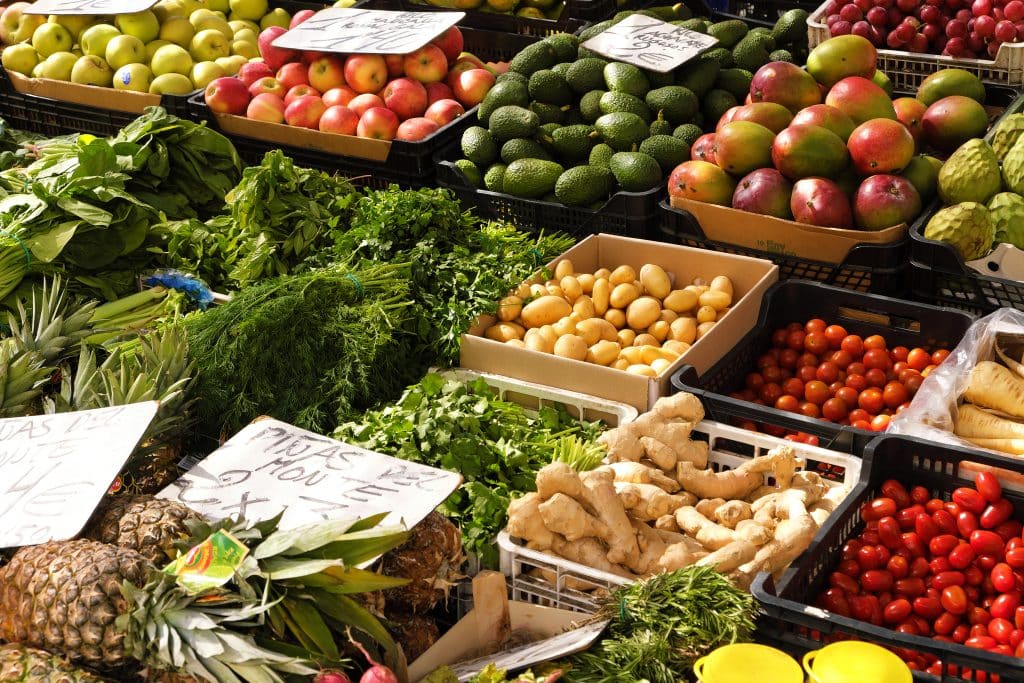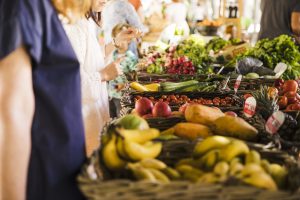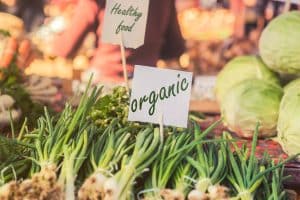The Changing Face of the American Food Market: 7 Trends Shaping What We Eat in 2025

Summary:The American food market in 2025 is rapidly evolving. This long-form report explores seven shaping trends — from the surge in plant-based proteins and inflation-driven grocery behaviors to the rise of local sourcing, functional foods, global flavor crossovers, and the upcycled food movement. Each trend includes insights, examples, and takeaways for consumers and industry professionals. Scroll down for a “Then vs Now” bubbly table, curated resources, and a short YouTube primer.
A Food Market in Motion

The U.S. food market in 2025 feels like a dynamic intersection of technology, consumer values, economics, and culture. Grocery aisles that once moved predictably now shift with new labels, fresh product launches, and entirely new categories. Shoppers are balancing price sensitivity with purpose-driven choices: many still watch budgets closely after years of inflation, yet a growing portion of consumers are willing to pay a premium for regenerative agriculture, traceability, or products that promise health benefits beyond basic nutrition.
Behind this change are several converging forces — supply chain adjustments after pandemic disruptions, rapid innovation in food tech, and a societal rethinking of how food can support mental and physical wellness. This article maps seven central trends that are redefining what Americans eat and how they buy it, providing both context and practical takeaways for readers of Rizzit News’ Daily Buzz.
As the market shifts, one of the clearest indicators of this transformation is the rise of plant-based and alternative proteins. Once considered niche, these products now anchor supermarket strategies, drive venture capital interest, and redefine what a “balanced plate” looks like for the modern American. This evolution represents more than a diet trend—it’s a cultural signal that consumers are rethinking their relationship with food, aligning nourishment with environmental responsibility, ethics, and personal wellness goals. The next section explores how plant-based innovation is reshaping the nation’s protein supply and culinary imagination.
Trend #1: Plant-Based and Alternative Proteins Move from Niche to Necessity

The plant-based revolution that began as a niche movement has matured into a mainstream market segment. Once primarily driven by ethical consumers and early adopters, plant-based foods are now targeted toward mainstream meat-eaters, flexitarians, and culinary professionals. Advances in flavor, texture, and nutritional formulation mean many plant-based patties, chicken substitutes, and seafood alternatives deliver sensory experiences close to conventional animal products.
At the same time, lab-grown (cell-cultured) proteins and fermentation-derived ingredients are progressing through pilot plants and regulatory checkpoints, opening pathways to commercial launches. Retailers respond by expanding plant-based sections and developing hybrid products (e.g., blended meat-and-plant items) that reduce environmental footprint while keeping familiar tastes. For producers, differentiation is now essential — through clean-label ingredients, local sourcing, or superior texture technologies — as competition intensifies.
Trend #2: Inflation, Price Sensitivity, and Shifting Grocery Behaviors

Economic pressures remain a key driver in consumer food behavior. While inflation has moderated since its peak, households continue to report lasting changes in how they shop. Bulk buying, private-label adoption, and price-matching have become standard for millions of shoppers. Digital coupons, store loyalty apps, and real-time deal tracking are now part of everyday grocery planning.
This environment encourages retailers to build value-centric product lines and promotional bundles. Consumers trade down in some categories but trade up in others — paying more for fresh produce or functional foods while cutting back on premium snacks. For brands, clear communication of value, whether through nutrition, transparency, or sustainability, is more important than ever.
Trend #3: Local, Sustainable, and Transparent Sourcing Gains Traction
“Local” has transformed from a buzzword to a business model. Farmers’ markets, co-ops, and even big-box chains are investing in regional supplier partnerships. Sustainability claims are also becoming measurable: shoppers seek verified carbon footprints, third-party certifications, and transparent sourcing stories. Regenerative agriculture and soil health are now consumer-facing selling points.
For producers, transparency means competitive advantage. Small farms leverage social media to show planting and harvesting processes, while major retailers use QR codes to let customers trace ingredients to the farm level. The demand for authenticity is clear — Americans want food that aligns with their environmental values and community support efforts.
Trend #4: Technology — From Farm to Table — Changes the Rules
Technology is revolutionizing every link of the food chain. On farms, AI-powered irrigation, drone monitoring, and predictive analytics are boosting yields. In retail and delivery, automation and robotics enhance efficiency, while blockchain platforms provide full supply chain visibility. For consumers, smart kitchen devices, AI recipe apps, and subscription meal kits continue to change how food is discovered and consumed.
Yet with innovation comes caution: concerns about data privacy, labor shifts, and algorithmic control in food delivery apps highlight the human side of tech transformation. The key challenge lies in using technology to empower rather than replace — ensuring digital tools strengthen human connection to food rather than distance it.
Trend #5: Functional Foods and Mental Wellness Eating

Consumers increasingly view food as medicine for both body and mind. Functional foods designed for cognition, mood, gut health, and sleep are now mainstream. Ingredients like adaptogens, probiotics, and omega-rich superfoods dominate grocery shelves, often paired with calming packaging and wellness branding.
This evolution signals a broader cultural shift: mental wellness is no longer a niche topic but part of everyday nutrition. Shoppers want breakfast cereals that boost focus, drinks that reduce anxiety, and snacks that aid sleep. For brands, integrity is crucial — scientific credibility and clear labeling can make or break success in this expanding market.
Trend #6: Global Flavors Go Mainstream — The Democratization of Taste
America’s appetite for global cuisine is stronger than ever. Flavors from West Africa, Southeast Asia, and the Middle East are appearing in sauces, meal kits, and restaurant menus nationwide. Global fusion has become a culinary art form, merging diverse traditions while preserving authenticity. Social platforms like TikTok accelerate this process, turning home cooks into influencers of cross-cultural flavor trends.
For the modern consumer, this globalization of taste is about curiosity and connection. It represents not just new spices or sauces but a celebration of cultural storytelling through food.
Trend #7: Food Waste, Upcycled Products, and Circularity

Waste reduction has shifted from moral ideal to market mandate. Upcycled products — snacks from surplus produce, flour from vegetable pulp, and chips from spent grain — are capturing consumer attention. Dynamic pricing in grocery stores and zero-waste menus in restaurants are further reducing waste across the industry.
Beyond sustainability, circularity offers business value: lower input costs, stronger customer trust, and differentiation in a crowded marketplace. As awareness spreads, upcycled and waste-conscious branding may become as common as “organic” once was.
Then vs Now — A Handy Bubbly Table for Quick Contrast
| Then | Now |
|---|---|
| Conventional categories dominated — meat, dairy, and processed staples were central to grocery strategy. | Layered markets prevail — value, local, regenerative, and functional tiers coexist, shaped by consumer purpose. |
| Limited data and personalization — product discovery was mostly in-store and brand-driven. | AI-powered personalization — apps and meal kits recommend products tailored to diets and goals. |
Practical Takeaways for Consumers, Retailers, and Brands
For consumers: Balance cost and quality. Incorporate more plant-based meals, try new global flavors, and use store loyalty apps to track deals on premium products.
For retailers: Curate product categories (value, sustainable, functional) and train staff to educate shoppers on ingredient sourcing and benefits.
For brands: Focus on authenticity. Highlight traceability, transparent labeling, and credible health claims to earn trust.
The Consumer’s Role in Shaping the Food Market
While technology and corporations play major roles in shaping the food landscape, the real power lies with consumers. In 2025, shoppers are more informed and vocal than ever. They research company ethics, share grocery finds on social media, and collectively influence trends through online engagement. Viral TikTok recipes can boost demand for obscure ingredients overnight. At the same time, consumers are holding brands accountable for sustainability promises and pricing fairness. This bottom-up influence ensures that the future of food remains responsive to the people who buy it — creating a feedback loop between values, demand, and innovation.
Conclusion — Where the Food Market Is Headed Next

The American food system in 2025 stands at a crossroads between innovation and intention. From plant-based breakthroughs to AI-driven personalization, the next era of food will be defined by transparency, wellness, and collaboration between producers and consumers. The challenge for all participants — from policymakers to local farmers — is to ensure that these advances build a fairer, healthier, and more sustainable system for all.
As consumer awareness deepens and digital tools continue to evolve, one thing remains constant: food will always reflect who we are, what we value, and the future we envision together.
The American food landscape in 2025 is not just changing—it’s maturing. What once seemed like temporary shifts in consumer habits have now become long-term realities guiding both corporate strategies and household decisions. The interplay between affordability, sustainability, and innovation continues to define how Americans eat, shop, and think about nourishment. From the rise of regenerative agriculture to the expansion of upcycled products, every aisle and menu now tells a story of adaptation and creativity. Consumers are increasingly empowered to choose not just what fuels their bodies, but what aligns with their values—whether that’s carbon footprint reduction, local sourcing, or mental wellness support through functional nutrition.
Looking ahead, the convergence of technology and conscious consumption will continue to rewrite the rules of food commerce. Artificial intelligence, blockchain transparency, and direct farm-to-table digital platforms are setting the stage for a smarter, fairer, and more connected food economy. Yet amid all this innovation, one truth remains steady: food is still about connection. How we gather, share, and experience meals reflects who we are as a society. The food market’s evolution in 2025 isn’t just about what’s on our plates—it’s about how we redefine community, responsibility, and well-being through every bite.
As readers, shoppers, and citizens, staying informed about these shifts means more than following trends—it’s an invitation to engage. Whether you support a local grower, try a plant-based recipe, or explore global flavors at your dinner table, your choices ripple through a vast network of change. The American food story is being written one decision at a time, and understanding its direction is the first step toward shaping a healthier, more sustainable future for everyone.
External Resources & Further Reading
- United States Department of Agriculture (USDA) — agricultural outlooks and food policy reports.
- Food Dive — industry news and technology insights.
- Statista: Food Industry in the U.S. — data and projections.
© 2025 Rizzit News. All rights reserved.





